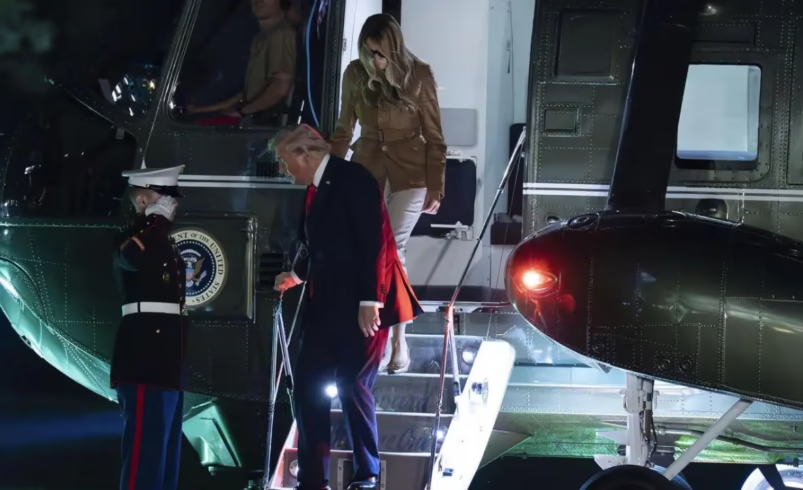Trump’s helicopter makes emergency landing near Luton
- September 19, 2025
- 0

A helicopter carrying US President Donald Trump was forced to make an unscheduled landing near Luton after a technical issue arose during his departure from the United Kingdom. The aircraft, known as Marine One, experienced what officials later described as a “minor hydraulic issue.” As a precaution, the pilots diverted and landed safely, allowing Trump and the First Lady to transfer to another helicopter without incident.
The incident occurred shortly after Trump concluded his state visit to the UK. While en route, Marine One developed a hydraulic problem that required immediate attention. Following standard safety protocols, the crew decided to land near Luton rather than continue the journey. Officials emphasized that this was a precautionary measure and not an emergency crash landing.
The White House confirmed that the helicopter had encountered a minor technical fault but stressed that there was no danger to those on board at any time. According to statements issued afterward, the decision to land was made out of caution, ensuring that all safety procedures were followed correctly. The swift response of the pilots and crew was credited with maintaining calm and order throughout the event.
After Marine One touched down safely, both Trump and the First Lady were transferred without delay into a support helicopter that had been traveling alongside as part of the official convoy. This backup aircraft ensured that their travel schedule could continue with minimal disruption despite the unexpected stop near Luton. Reports confirmed that neither passenger experienced any distress during or after the incident.
Hydraulic systems are critical for controlling various functions in helicopters, including steering and stability mechanisms. Even minor malfunctions can prompt crews to take immediate action for safety reasons. Aviation experts note that precautionary landings are standard practice whenever such issues arise, underscoring how seriously flight crews treat even small anomalies in system performance.
The handling of this situation highlighted established aviation safety measures designed to protect high-profile passengers as well as crew members. By diverting quickly and transferring passengers seamlessly, officials demonstrated how contingency planning works effectively in real-world scenarios. Such measures are particularly important when transporting heads of state or other dignitaries who require heightened security and reliability during travel.
The unscheduled landing of Marine One near Luton served as a reminder of both the complexity of modern aviation systems and the importance of rigorous safety procedures. While described as only a minor hydraulic issue, it showcased how prepared crews are to respond swiftly when technical problems arise mid-flight. With no injuries reported and travel plans continuing smoothly afterward, the incident ultimately reinforced confidence in established aviation safeguards for presidential transport operations.